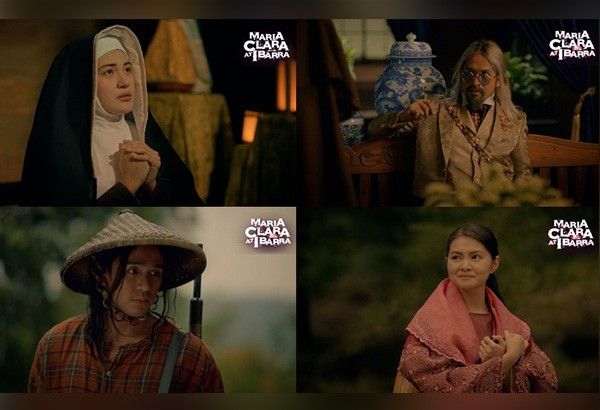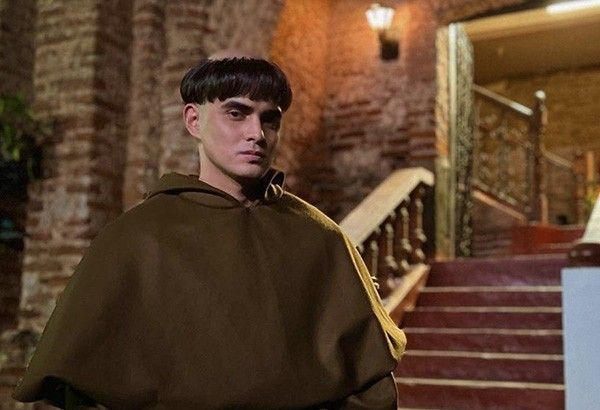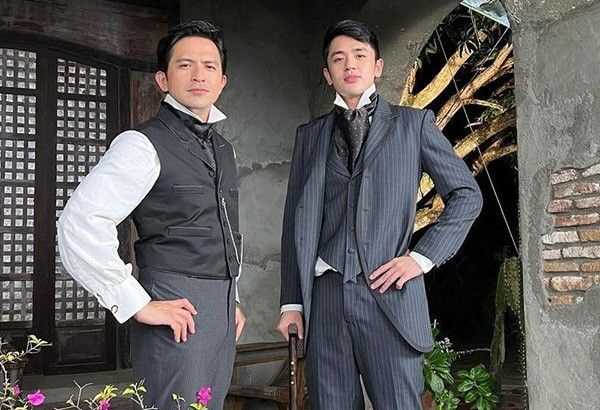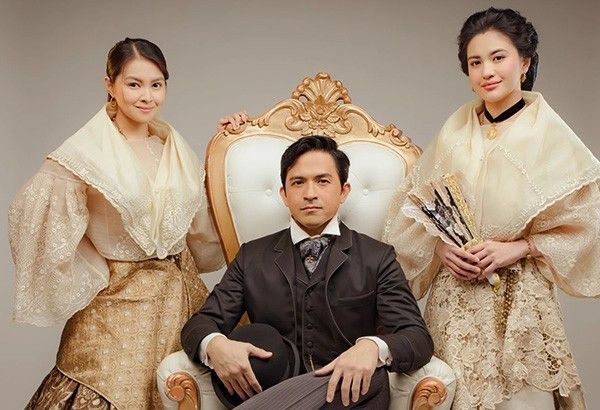'Maria Clara at Ibarra' costumes: Inspiration, costs revealed

MANILA, Philippines — A show is arguably successful if its influence transcends beyond the screen, just like in the case of the historical portal fantasy series "Maria Clara at Ibarra."
It may have not escaped one's notice last Christmas how several parties chose the show as their theme.
"We’ve already felt the resurgence of the Filipiniana. We’ve seen a lot of posts on social media about Christmas parties and events that had dress codes written with 'Come in your best Maria Clara at Ibarra attire'," said Jan Raroque to Philstar.com in an eamil interview.
Raroque is among the three stylists of the show. The other two are Roko Arceo and Margie Sorio. They are assisted by Mikaela Borinaga under the supervision of scenographer and fashion historian Gino Gonzales and production designer Bill Gustillo.
"One of our suppliers also messaged us that they’ve had a surge of orders of piña fabrics for costumes and custom orders. We initially had a hard time procuring embroidered piña fabrics when we were doing our pre-production because most of the burdaderos lost their jobs and were greatly affected by the pandemic and had to pivot to different industries. We’re just happy that we were able to shine a light on these amazing craftspeople and their works," Raroque added.
Raroque has been in the industry since 2015. His focus is on womenswear and maximalist styling. Arceo is a seasoned stylist who also did the styling of past GMA-7 shows such as "Descendants of the Sun" and "Legal Wives."
Sorio, meanwhile, handles the show's more technical costumes like the ones worn by the friars, Guardia Civil and Spanish officials. She worked on period pieces such as "Illustrado" and "Zorro."
From Victorian era to 'steampunk'
Until "Maria Clara at Ibarra," TV appeared drab, out-of-this-world, mundane and/or campy, which is not necessarily a fault given that many local shows are soaps and fantasies.
"Maria Clara at Ibarra" has to stay true to its setting, which started in 1884 to the late 1890s. In fashion parlance, these included the Victorian era until the Industrial Revolution.
No stones were left unturned, it appeared, for the show's costume department.
Arceo said that they referenced their looks on Juan Luna’s "Bocetos" and Leonard Tayao-Cruz’s "Noli Me Tangere" paintings. They also took inspiration from the photos by noted fashion photographer Francis Gum for the "Pineapple to Piña" exhibit at the SFO Museum in San Francisco California.
The 1961 and 1992 versions of "Noli Me Tangere," as well as the 1962 version of "El Filibusterismo" also served as their inspiration.
The team also works closely with experts such as notable costume designer Gino Gonzales and Dr. Siao Campoamor, vice chancellor and professor of the Department of Filipino and Philippine Literature at the University of the Philippines Diliman.
"We consult every scene with them, especially when we can’t understand Rizal’s detailed description in the book," Arceo said.
Dressing up Simoun
When the show transitioned to the "El Filibusterismo" arc, Dennis Trillo's Simoun had the most drastic change among the cast.
From his crisp gentleman suits as the rich Mestizo de Sangley (Chinese mestizo) Crisostomo Ibarra in "Noli Me Tangere," Trillo's vengeful Simoun draws inspiration from Irish playwright Oscar Wilde to the more practical look of the Industrial Age.
Arceo said that they played around Simoun's looks but stuck to Rizal's description of the story's hero.
"His appearance is described as being tanned, having a sparse beard, long white hair, and large blue-tinted glasses. We hired Lyndon Costes of Wigshoppe to do custom blonde human hair wigs for him. We made him look very eccentric and as worldly as possible, using damask, tweed, and jacquard, playing on prints and colors. We were also inspired by Oscar Wilde, so you can see some touches of dandy and eccentricity in some looks," Arceo said.
He explained that since the 1890s, the setting of the "El Filibusterismo" arc of the story, was the start of the Industrial Revolution, they incorporated "steampunk" references that include goggles, eyeglasses and leather pieces.
"We started our styling deck based on the silhouettes of the 1860s to 1880s for 'Noli Me Tangere' and 1890s for 'El Filibusterismo.' Victorian Period for 'Noli,' which was all about the exaggerated bustle and opulence. For 'El Fili,' which was in the late Victorian period, was less frilly and more utilitarian. The 1890s were a period of change and the Victorian era was drawing to a close. The world began to move away from the stiff, moralistic, Victorian Era. People were moving more, so there was a great deal of sportswear, and those influences were seen in mainstream fashion," he added.



The cost
It doesn't take a clothing expert to guess that the ensembles worn by the cast of "Maria Clara at Ibarra" cost more than the average price of regular, casual everyday pieces.
"For our main cast, we didn’t skimp on the materials for our costumes. We made sure that they were all as authentic as possible. So for Crisostomo, Simoun, Fidel, Maria Clara, and Klay’s looks, we spent roughly around P30,000 to P40,000 per set, for materials, labor and accessories," Arceo revealed.
The show's main heroines, Klay (Barbie Forteza) and Maria Clara (Julie Anne San Jose), were often seen in Filipiniana, with fancy fans that is held in its place by a chain that hung on their left side.
Crisostomo and his bestfriend Fidel (David Licauco) sport the suits fashioned after the Western looks, completed with top hats, bowler hats and walking cane. The accessories are all locally sourced.
The Spanish friars, Padre Damaso (Tirso Cruz III) and Padre Salvi (Juancho Trivino), wore habits made out of thick brown wool, the same fabric used by the Franciscan monks. Each costs around P15,000.
"Some of the best comments we received were from our consultants and avid 'Noli' fans saying that it was all how they imagined the characters to be and posts saying that the clothes were all on point with the period. We tried as much as possible to be accurate and not to revise history. It’s a constant balance with providing costumes that are visually impactful and historically correct," noted Arceo.
RELATED: Valentine's gift for fans: 'Maria Clara at Ibarra' extended



















